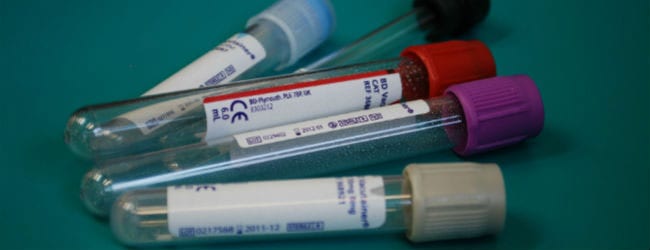If you’re a regular PatientWorthy reader, chances are you’ve been on the receiving end of this loaded statement from at least one doctor:
“We’re going to need to run some labs.”
DAMN. And then the questions kick in: How much blood are you taking? What are you looking for? When will I see the numbers? What do the numbers mean? And how do you “run” a lab anyway? Do labs wearing running shoes? Has your lab run more marathons than I have?!

Source: www.giphy.com
Lab work is one of the most impenetrable of the medical mysteries patients face, and there isn’t really a standard, simple guide for understanding what they are and what that tossed salad of numbers actually means.
Fortunately, Dr. Bob Geng of the University of California, San Diego has given us a good place to start.
Writing in IG Living magazine, Dr. Geng has broken down the components of the complete blood count (CBC) and the basic metabolic panel (BMP) and how doctors use them to paint a fuller picture of their patients’ overall health. While these tests don’t directly lead to a diagnosis of primary immunodeficiency diseases or autoimmune disorders, they are critical in helping detect irregularities that point doctors in the right direction.
In the case of the CBC, that means measuring levels of hemoglobin and looking at the white blood cell count and platelet count. Higher or lower numbers of hemoglobin can indicate breakdowns in the processes that produce red blood cells, while variations in white blood cells counts can point to systemic inflammation and possible infection. Variations in hemoglobin could mean problems in blood clotting.
Meanwhile, doctors look at the BMP to analyze how certain chemicals critical to the body’s function are concentrated in the blood. Abnormal levels of sodium, potassium, glucose, and other chemicals are like road markers that help determine whether there’s a problem with certain organs or the body’s ability to perform a key function like retaining water.
While Dr. Geng may not answer all of your lab-related questions, he gives you a lot to chew on. You kind of want to hug him to say thanks.








